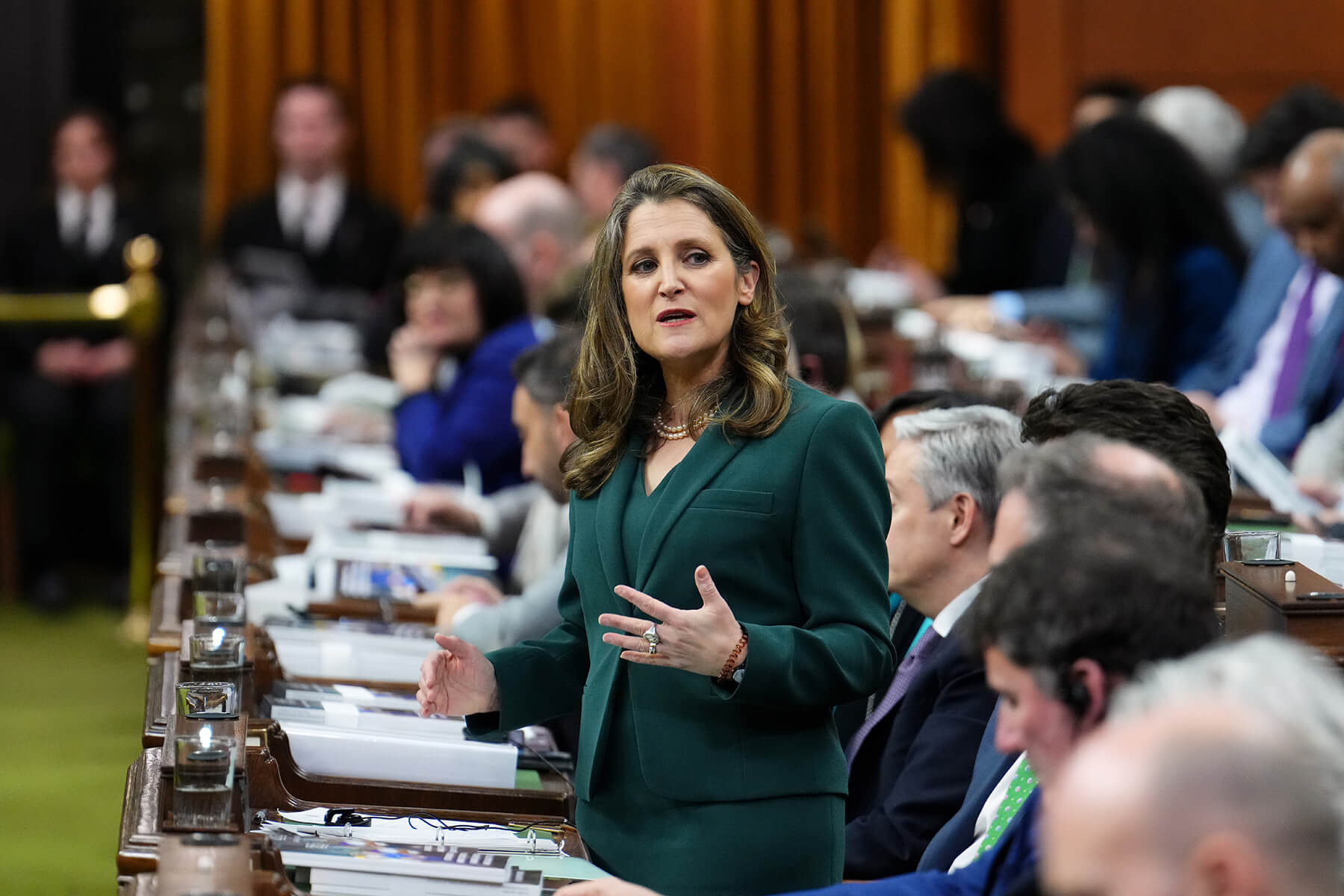The federal budget takes decisive strides to expand clean electricity and accelerate clean growth across Canada.
What’s new?
Budget 2023 detailed a range of substantive measures that will accelerate clean growth and help Canada meet its climate targets. Our initial assessment is that this is the most consequential budget in recent history for climate action, and will pay dividends for jobs, affordability and growth.
The budget’s backbone is a major investment in the bigger, cleaner and smarter electricity systems that Canada needs to power a clean economy and achieve a net zero grid by 2035. This investment is complemented by a targeted response to the U.S. Inflation Reduction Act to reduce emissions while keeping Canada competitive.
By the numbers
Figure 1: Budget 2023 makes significant investments in clean electricity and clean growth
Budget 2023 contains $70 billion in new or reallocated funds for emission-reducing actions by 2034-35. Figure 1 shows the sectors that will benefit from this spending. It illustrates two clear, interwoven priorities: expanding clean electricity and accelerating clean growth.
First, Budget 2023 makes significant investments to expand Canada’s supply of clean electricity, which is one of Canada’s major competitive advantages and the foundation of a net zero economy. The budget introduces a new investment tax credit for clean electricity worth $25.7 billion over the next ten years and contributes a fresh $3 billion to existing electricity programs at Natural Resources Canada. It also refocuses the Canada Infrastructure Bank, directing the Bank to invest at least $20 billion in clean electricity and green infrastructure projects.
Second, the budget details targeted incentives for sectors that will play a key role in powering clean growth in Canada. Budget 2023 outlines investment tax credits for clean hydrogen and clean technology manufacturing, expands tax credits for zero-emissions technology manufacturing and carbon capture, and confirms that the $15 billion Canada Growth Fund will support certain clean growth projects through carbon contracts for difference. This tool can give investors certainty about the future price of carbon or the price of commodities like hydrogen, helping to spur investments in clean growth projects.
Between these two priorities, the government has produced a carefully calibrated response to the U.S. Inflation Reduction Act. As recent analysis has shown, Canada doesn’t need to match the U.S. dollar-for-dollar to remain competitive, thanks to a strong framework of policies across all orders of government, founded on Canada’s carbon pricing system.
Finally, Figure 2 shows that the federal government plans to deliver on these priorities mainly through investment tax credits. The budget estimates the cost of these credits, but the actual cost will depend on how much investment takes place. Federal money is on the table, but these funds will only flow when utilities and companies start buying equipment and building infrastructure. The ball is now in their court.
Figure 2: Tax credits make up 80 per cent of new and reallocated funding in Budget 2023
Ross Linden-Fraser is a Senior Research Associate with the Canadian Climate Institute. Arthur Zhang is a Research Associate with the Canadian Climate Institute.
